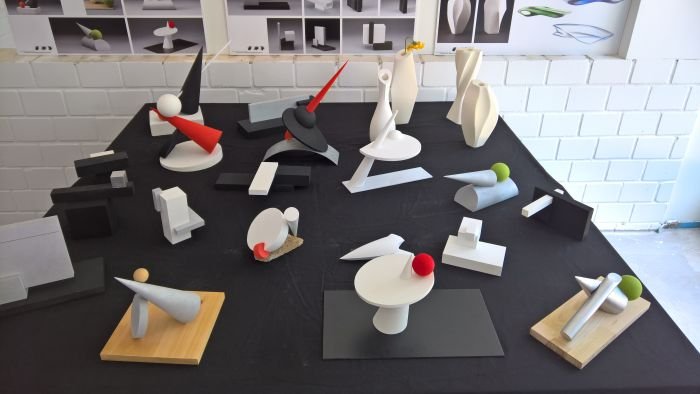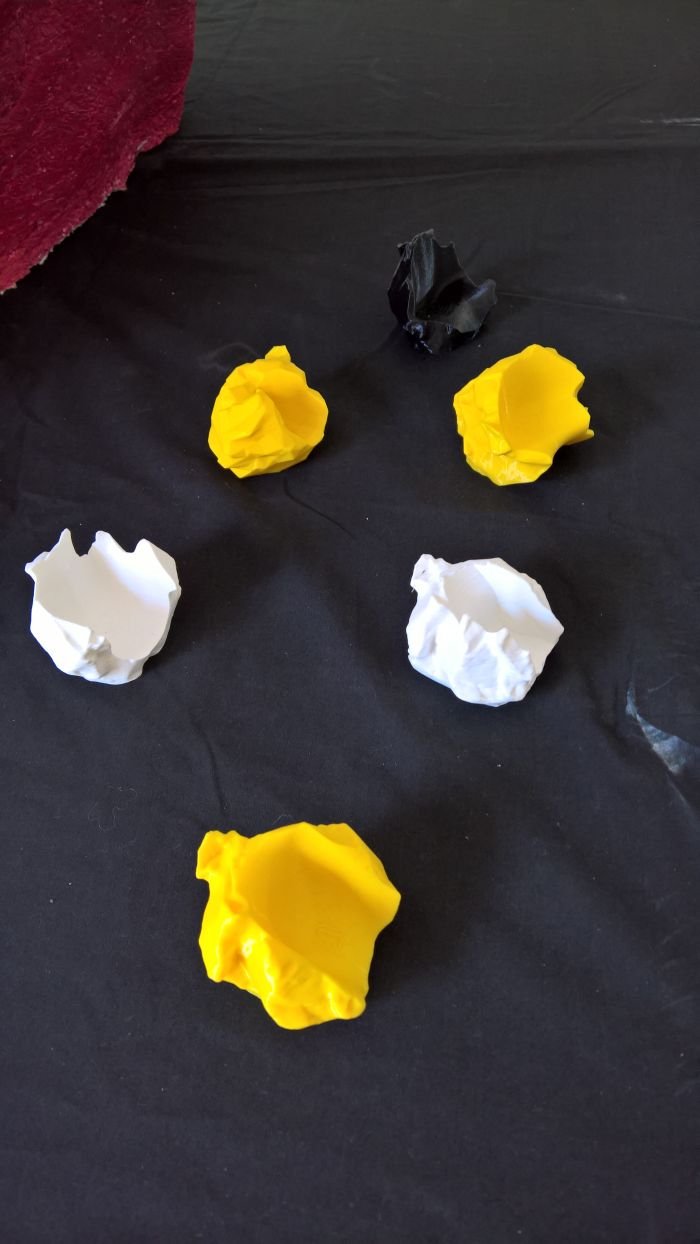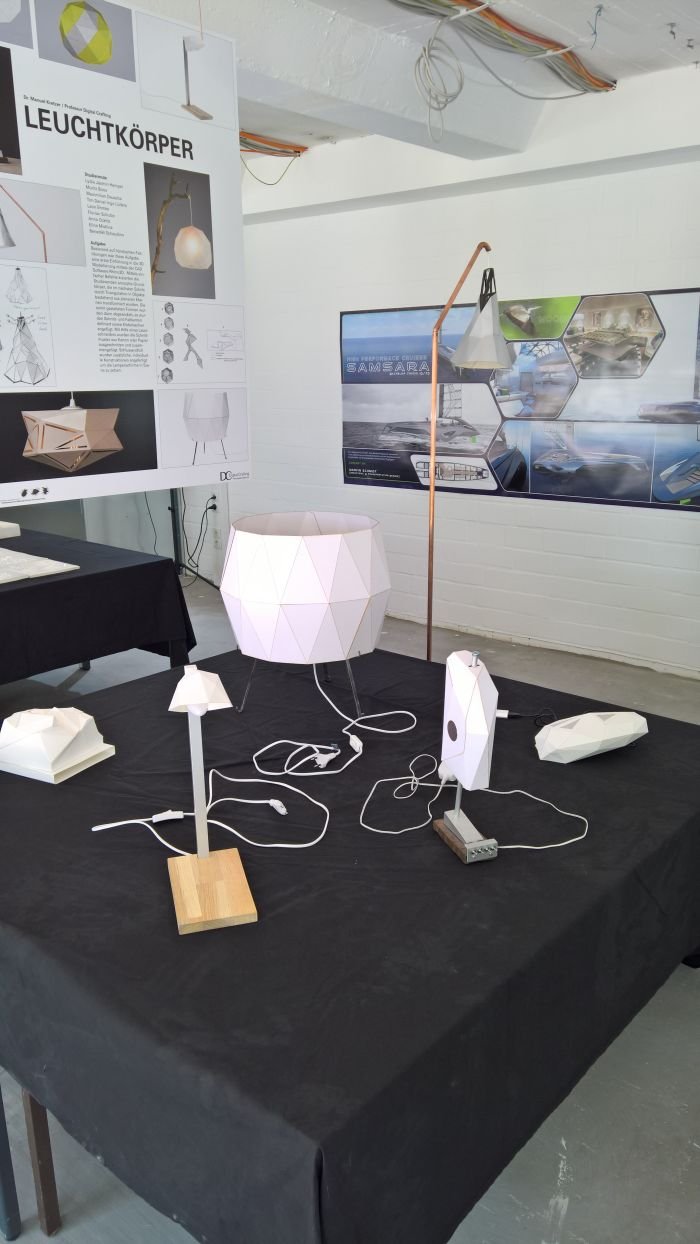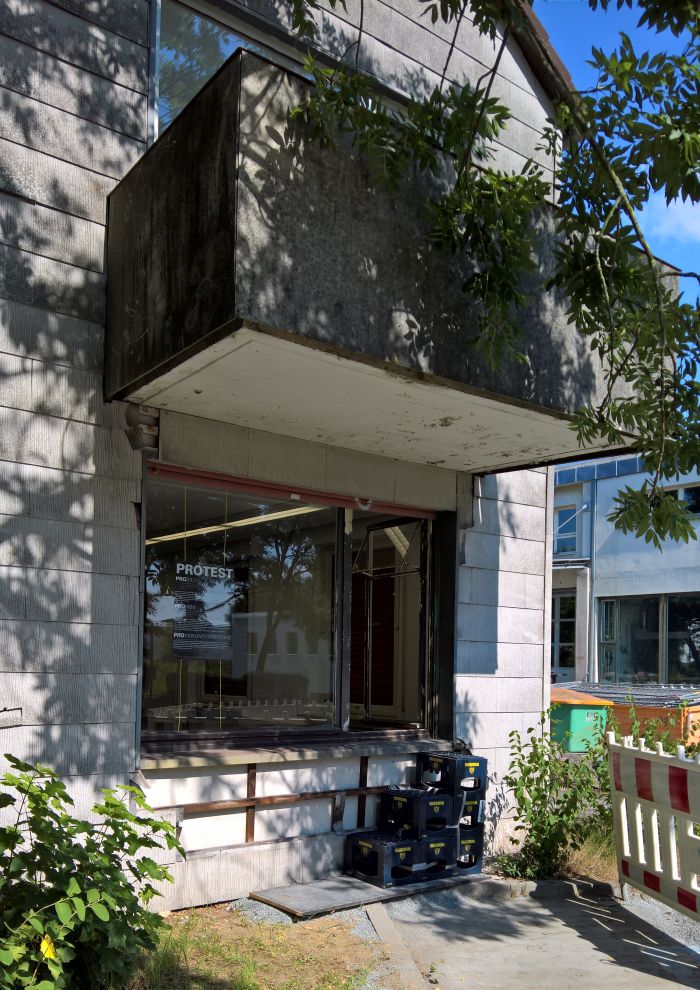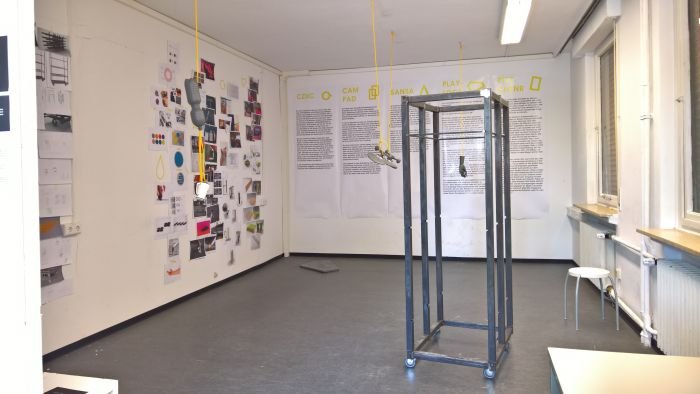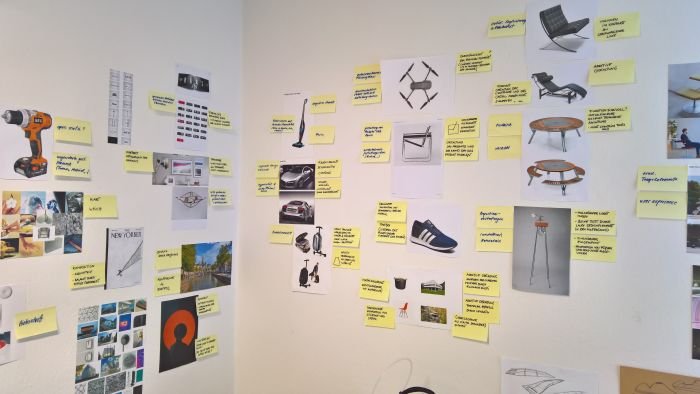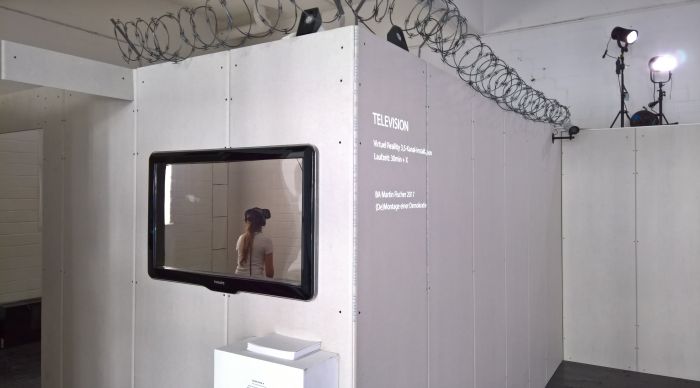Jokes about revolting students are as old as the noble art of the student protest itself.
And neither has lost any of their charm.
The 2017 Hochschule für Bildende Künste Braunschweig Rundgang was held against the backdrop of a student protest over new regulations concerning, amongst other aspects, how and when the school buildings and workshops could be used.
But would there also be protest from our side over the way the students had used the buildings and workshops........?
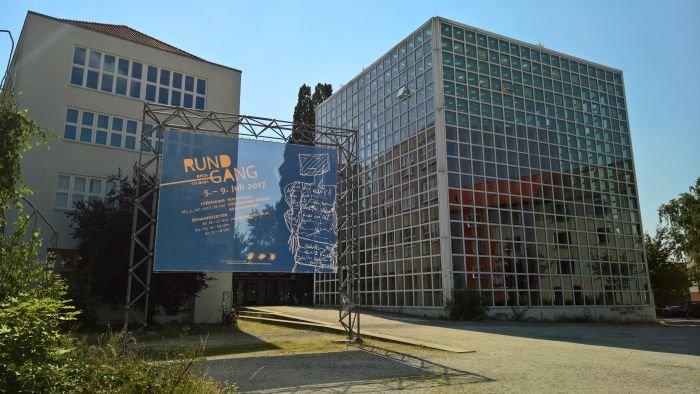
Although formally established in 1963 the Hochschule für Bildende Künste, HBK, Braunschweig can trace its history back to 1790 and an architectural and technical draughting college established in the city under the patronage of Duke Karl Wilhelm Ferdinand. Over the course of a series of mergers and associated new orientations the school evolved over the next 150 years as a series of trades, applied arts and art colleges before in 1963 it reached its current carnation. Classified as a university since the mid 1970s, the HBK Braunschweig has in addition been permitted to award Doctor titles since 1984.
Offering a range of undergraduate and postgraduate courses, including a Fine Art Meisterschule and teacher training in art and performing arts, our principle focus was, as ever, the design courses. An area of study currently in a period of reorganisation at Braunschweig: while the courses in Industrial Design are being phased out, since 2014 the university has offered courses in Transformation Design and Design in der digitalen Gesellschaft - Design for a Digital Society: two courses intended not only to reflect the changing nature of the world in which designers operate, but which couple the design process to the artistic process, place design education firmly in context of artistic education and which, in a way, arguably, in doing so say that the designers of our future society need to think less like engineers and more like artists. Figurative not technical skills are required. If that's a good thing, if that's the correct thing, if that's something to be welcomed or greeted with a long sigh of despair, is a subject for another day.
The subject for this day is the works on show at the 2017 HBK Braunschweig Rundgang.
Works we were fortunate to experience......
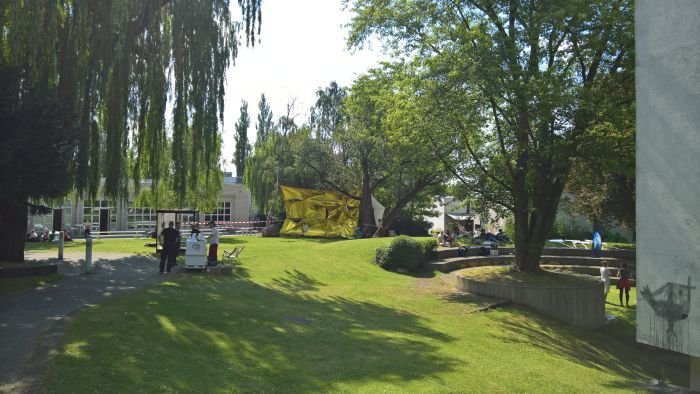
As noted in the introduction the HBK Braunschweig students are revolting.
The source of the students' wrath is a new Hausordnung - House Rules - which, amongst other changes, mean the workshops are closed weekends. Now we don't want to appear to be taking sides, we're not, its an internal thing for the students and the administration to work out; but it would appear a strange decision. While accepting that there needs to be some form of regulation to ensure the use of the workshops is fair, safe, and for all meaningful, creativity isn't a Monday to Friday nine to five existence. Its a process that rises and falls in an indiscriminate wave. And knows no weekend. Far less public holiday.
By way of a response to the coming closure of the workshops the students "closed", i.e. didn't open, some of the intended exhibitions.
Protesting as a student is a tricky business. As a worker you can withdraw your labour power, but as a student?
Genuinely, who cares if you don't work or don't show your work?
Who?
Certainly the college don't. Quite the opposite. In an addendum to the Rundgang programme the HBK authorities wrote that as part of the protest the students would be holding alternative tours through the exhibitions and encouraged visitors to participate and contribute to the discussions. Thus turning the protest into a college event. Which automatically negates it. And also demonstrates just how difficult it is to protest as a student these days. They had it so easy in '68.
These days one needs to use more creative forms of protest, something we would have wished from art and design students. Cleverly worded posters makes the viewer smile, don't change the situation. Sitting around in Plena never changed anything. And never, ever, ever, will. While not showing your work just annoys those who got up at 5.30 to travel hundreds of kilometres solely to view your work.
But yes, as the chipper tone to this post implies, the protest didn't spoil our day out in Braunschweig. Had it there would have been a lot more venom in this piece. Or perhaps better put, this post would be exclusively venom.
And contain a lot more side taking.
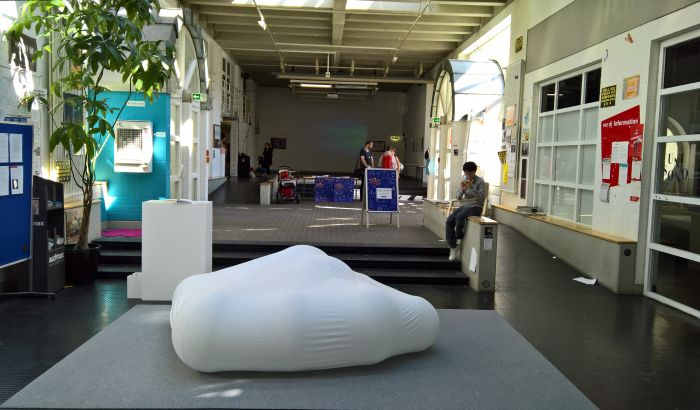
One of the major lessons we've learned thus far on our #campustour is that whereas a focus at German design school semester exhibitions is works from the first and second year courses, elsewhere in Europe the focus is exclusively on graduation projects. There are obviously exceptions, but generally speaking. We must admit to being very much in favour of the German approach, not least as it gives you an insight into how the school ticks, how the Profs tick, how the courses are constructed, where the school lays particular importance, and also helps explain what design students actually do all day.
In which context, we did note with some alarm that the new Hausordnung bans parties on college premises. ? or perhaps better put ???
At Braunschweig the design foundation courses ranged from classic considerations on form and structure, to lamps designed as an exercise in learning the basics of 3D modelling and chairs developed in a series of computer modelling steps from screwed up balls of paper; the latter two projects being part of the foundation classes in "Digital Crafting", a title which indicates the direction the school is intent on moving in. As did/does the numerous Virtual Reality projects presented, projects which varied from games to more reflective projects such as Martin Fischer's Bachelor project Television X which explored cognitive and emotional aspects of virtual reality.
If we're being honest, which we always try to be, no one project particularly stood out, OK that's not entirely true, but more later, however a couple of the courses presented did get us thinking.......
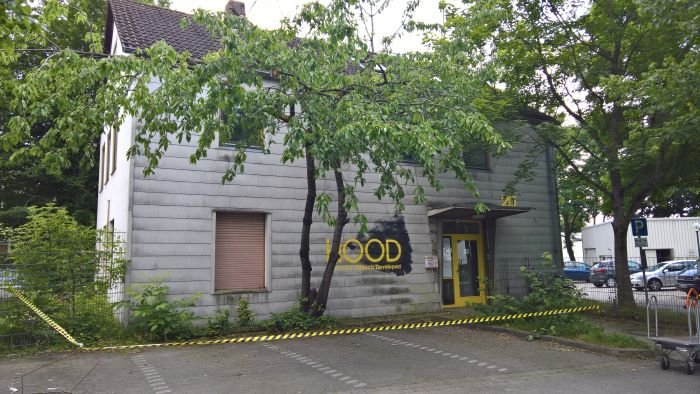
Presented in the run down splendour of the so-called House 20 on the edge of the Braunschweig campus, HOOD presented work from Industrial Design students under the leadership of Professor Kerstin Kaczmar and which explored differing approaches to product development; and thus neatly demonstrated our much repeated position that what design students produce is unimportant. Alone important is how they got there. Particularly pleasing about the HOOD presentation was the way it brought the visitor into this process, opening as it did with succinct overviews of five differing processes and systems which can be utilised when developing a product - usability tests, participatory design, the Offenbacher model, Maslow's hierarchy of needs, concept mapping - before the students explained the processes they had followed. The objects themselves were completely irrelevant. Something neatly highlighted by their anonymous, structureless greyness.
House 20 also presented the results of a semester project with Formvlies - a polyester based fleece material that can be formed in a fashion similar to plywood - and a project which produced the one stand out object for us. Or at least an object which sounded as if it was the one stand out objects for us. The actual object itself wasn't present, just a description and some sketches. If we're honest, we salivated. We hope to make an acquaintance with it at some point to see if it really is as good as it promised; bitter, bitter, experience having taught us that one should never judge a design project one hasn't actually seen. As with so much in life, all too often reality falls far short of promise. And therefore we will say no more. It is enough that we torment ourselves without involving innocents. Watch this space......
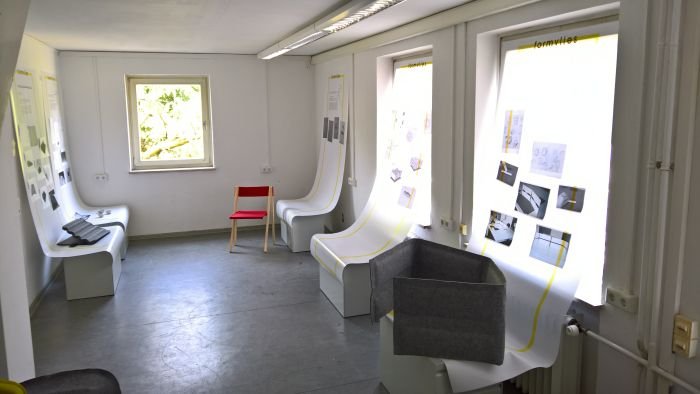
Organised in context of the Design for a Digital Society course, the project Last Mile - Smart micromobility for zero emission cities, looked at emission free solutions for moving people and goods through cities. And a project which produced the inevitable range of "future" transporters. Invariably shiny "future" transporters. Anyone looking for a future secure business should go into vehicle polishing. For the future is going to be hi-sheen.
While a perfectly valid and valuable exercise in product development, form and materials, for us it also deliciously underscored the futility of such research into future mobility. What is wrong with the bus? The tram? Or the bicycle? For 200 years the bicycle has allowed for emission free, independent, democratic transport. In cities and rural environments. Why would we want to give it up?
And in terms of transporting goods, is that not something we want to be doing less of? And when, then in smaller quantities over shorter distances?
Viewing projects such as Last Mile we are reminded of the, allegorical, conversation between a US astronaut and Russian cosmonaut. The former explaining to the latter how many millions of dollars the US had invested in developing a pen which allowed them to write in space. Expressing his amazement the cosmonaut declares, they just used pencils.
Just because things are possible doesn't mean they are sensible. The revolution we need for zero emission cities is in us, in our thinking, in our dealings, in disassembling our egos. And in understanding that life in a digital society can be analogue.
Which, as ever, isn't to detract from or otherwise denigrate the work the students undertook and the way they developed their projects, far from it, but is to question why we need the objects they created.
Full details on the Hochschule für Bildende Künste Braunschweig can be found at http://hbk-bs.de/


